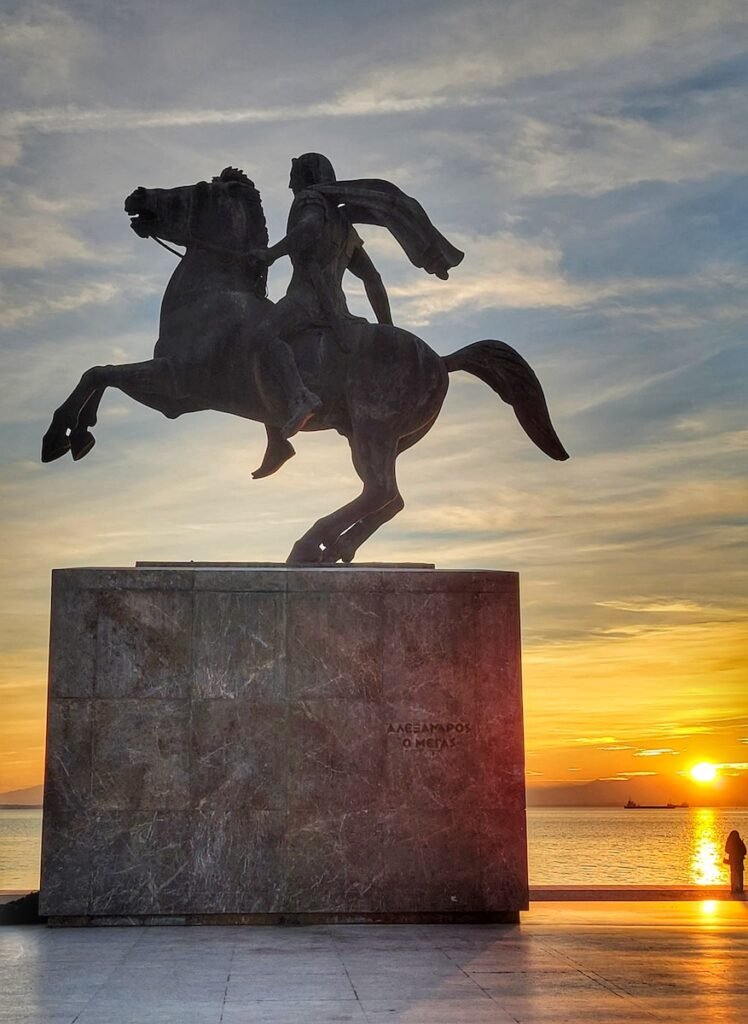Introduction to Alexander the Great’s Burial Site
The burial site of Alexander the Great, the legendary Macedonian king and military genius, has long remained a mystery that has captivated historians, archaeologists, and enthusiasts alike. Alexander’s final resting place has been a subject of fascination for centuries, with numerous theories and myths surrounding its location. Uncovering the truth about his burial site not only sheds light on the enigmatic life of this iconic figure but also offers valuable insights into ancient history. This article delves into the historical background of Alexander the Great, explores the efforts made to find his burial site, analyzes the archaeological discoveries and theories surrounding it, discusses the role of technology in the search, debunks myths associated with his tomb, highlights the significance of finding it, and acknowledges the challenges faced by archaeologists in this quest.
Historical Background of Alexander the Great
Alexander the Great, born in 356 BCE in Pella, Macedonia, rose to become one of the most influential figures in ancient history. He inherited the kingdom of Macedonia from his father, King Philip II, at the age of 20 and embarked on an ambitious campaign to expand his empire. Within a span of just over a decade, Alexander conquered Persia, Egypt, and much of the known world, creating an empire that stretched from Greece to India. His military prowess, strategic brilliance, and ability to inspire his troops made him a legendary figure in warfare.
The Quest to Find Alexander’s Final Resting Place
After Alexander’s death in 323 BCE, his body was believed to have been placed in a golden sarcophagus and laid to rest in a magnificent tomb, but its exact location remains unknown. Over the centuries, numerous expeditions and explorations have been conducted in search of his burial site. Historians and archaeologists have meticulously sifted through ancient texts, examined historical accounts, and scoured potential locations associated with his death to uncover the truth behind his final resting place.
Uncovering Clues: Archaeological Discoveries
Archaeological discoveries have played a crucial role in unraveling the mystery surrounding Alexander’s burial site. In the ancient city of Alexandria, Egypt, the potential tomb of Alexander was discovered in 1995, sparking widespread interest. Although the discovery turned out to be a different tomb, it highlighted the possibility of finding his final resting place. Other significant discoveries include a large tomb in Amphipolis, Greece, believed by some to be Alexander’s burial site, and the exploration of ancient cities such as Babylon and Siwa, where Alexander had a significant presence.
Analyzing the Controversial Theories
As with any historical mystery, various theories have emerged regarding the location of Alexander’s tomb. Some believe that his body was transported to his birthplace in Macedonia, while others argue that it lies hidden in Egypt. The city of Alexandria and the ancient Persian capital of Persepolis are also among the debated locations. Each theory is supported by historical evidence and interpretations, making it challenging to determine the most plausible option.
Theories Surrounding Alexander’s Burial Site
The theories surrounding Alexander’s burial site are diverse and intriguing. One theory proposes that his tomb is located in the Siwa Oasis in Egypt, where Alexander famously visited the Oracle of Amun and was declared the son of Zeus. Another theory suggests that his body was transported to Macedonia and buried in a tomb that has not yet been discovered. Some speculate that Alexander’s tomb is hidden within the vast ruins of Babylon, a city he admired and spent time in during his campaigns.
The Role of Technology in the Search for Alexander
Advancements in technology have played a crucial role in the search for Alexander’s burial site. Ground-penetrating radar, drones, satellite imaging, and other high-tech tools have enabled archaeologists to explore potential sites, map ancient structures, and analyze landscapes with unprecedented precision. These technological advancements have revolutionized the field of archaeology, facilitating the search for important historical sites, including the elusive tomb of Alexander the Great.
Debunking Myths: Separating Fact from Fiction
Throughout history, various myths and legends have arisen surrounding Alexander’s tomb. Some claim that his body was made of a material that could not decay, or that his tomb was guarded by mythical creatures. Others believe that his tomb holds vast treasures and priceless artifacts. However, these myths lack substantial evidence and are often based on exaggerated accounts and ancient folklore. Separating fact from fiction is crucial in the quest to uncover the truth about Alexander’s burial site.
The Significance of Finding Alexander’s Tomb
The discovery of Alexander’s burial site holds immense historical and cultural significance. Not only would it provide a final resting place for one of the greatest military strategists in history, but it would also offer valuable insights into his life, accomplishments, and the period in which he lived. The tomb could potentially contain valuable artifacts, personal belongings, and documents that shed light on the political, social, and cultural aspects of his era. Furthermore, finding Alexander’s tomb would fulfill a centuries-old curiosity and provide closure to the enduring quest for the truth.
Challenges Faced by Archaeologists in the Quest
The search for Alexander’s tomb is not without its challenges. The passage of time, natural disasters, urbanization, and wars have destroyed or altered ancient sites, making it difficult to ascertain their original purpose or significance. Additionally, the lack of conclusive historical records and conflicting accounts of Alexander’s death and burial complicate the search further. However, dedicated archaeologists and researchers continue to overcome these obstacles with determination and perseverance.
Insights into Alexander’s Life and Legacy
The discovery of Alexander’s burial site would provide invaluable insights into his life, character, and legacy. By analyzing the tomb and its contents, historians can gain a deeper understanding of the religious beliefs, burial practices, and cultural influences of the time. Additionally, the discovery could reveal new information about the political and military strategies employed by Alexander, his relationships with other rulers, and the extent of his empire. Uncovering these details would enrich our knowledge of ancient civilizations and offer further context to the story of one of history’s most fascinating figures.
Conclusion: Unveiling the Truth about Alexander’s Burial
The search for Alexander the Great’s burial site continues to captivate the world with its historical intrigue and significance. As archaeologists and researchers delve into the historical background, analyze archaeological discoveries, and incorporate advanced technology, the chances of unveiling the truth about his final resting place increase. Regardless of the outcome, the quest to find Alexander’s tomb has already shed light on his life, his accomplishments, and the enduring legacy he left behind. Whether his burial site is ultimately discovered or remains forever hidden, the quest itself serves as a testament to the human desire to uncover the mysteries of the past and connect with our ancient roots.


